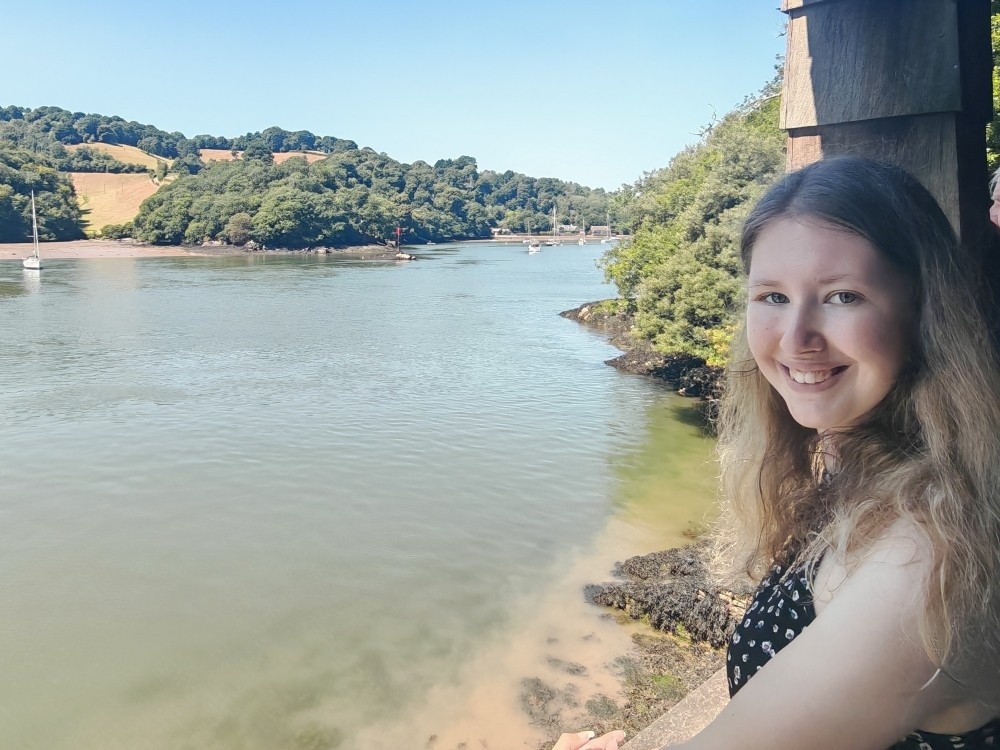India began showing symptoms of mitochondrial disease when she was just nine. She also lives with dystonia – a neurological movement disorder that causes painful, involuntary muscle spasms and contractions – and this adds another layer of complexity to her daily life.
“Everything felt overwhelming,” she recalls. “I went from being a relatively normal child to having frequent hospital appointments and needing lots of help with things like writing and walking around school – things I’d previously been able to do by myself.”
“Both the dystonia and my mito now constantly affect my daily life,” she continues. “I can’t do basic things like washing and dressing myself, preparing meals or walking unaided. Hobbies I used to love, like swimming and writing, are no longer possible because of the pain and difficulty.”
“It felt really frustrating to lose my independence,” India explains, “but I also lost all my friends, which was difficult to deal with, especially at a young age. As an adult, I still feel quite lonely and have lost a lot of confidence.”
The challenges others don’t always see
The physical impact of dystonia and mitochondrial disease is relentless, but it’s the emotional toll that’s often overlooked.
“I experience a lot of anxiety, particularly around my illness and the uncertainty of it,” admits India. “It’s scary not knowing what could happen in the future, how much more I could deteriorate and when. I over-analyse everything and always expect the worst. It’s hard not to compare myself with others, even though I know mitochondrial disease affects everyone differently. It’s so worrying not knowing if the pain I experience is normal.”
Living with a visible and invisible disability brings challenges in how people perceive her as well. “It can be really frustrating when people struggle to understand my voice and constantly ask me to speak up,” she says. “I feel like I’m raising my voice to the point when I’m almost shouting, but they still don’t hear me properly. That’s exhausting.”
She adds: “Some people think you’re only disabled if you use a wheelchair. But not all disabilities are visible. Pain doesn’t always show.”
Finding support and holding onto hope
India currently manages her condition with a combination of medication, physiotherapy, Q10 supplements and botulinum injections, but the limitations of her condition mean that emotional support is essential too.
“The Lily Foundation gave me access to counselling,” she explains. “That’s helped me learn how to manage anxiety and try to accept the uncertainty. I also join the weekly coffee mornings, which are a great way to connect with others who understand and to even make friends.”
Looking ahead with strength
When asked what she hopes for the future, India is clear: “That one day a cure can be found – for dystonia and for mito – or just some way to stop the deterioration. I’d love to get some of my independence back, and for the pain to be reduced. My hope is that others living with dystonia and mitochondrial disease can one day feel able to do anything they want without feeling restricted by their disability or the pain.”
India believes that spreading the word is the first step towards change. “These are rare conditions that make sufferers feel isolated and vulnerable,” she says, “so raising awareness of them is crucial.”
“I wish more people understood how life-limiting dystonia is,” she continues, “especially when combined with mitochondrial disease. It’s not just muscle spasms; it’s the loss of your identity, your confidence and your place in the world. We need more awareness so people understand how to help and support those living with these conditions.”
You can help this Dystonia Awareness Month by spreading the word, sharing stories like India’s and helping others to understand the reality of living with dystonia and mitochondrial disease. Awareness leads to understanding, and understanding drives change – so every share, conversation or post really can make a difference.

